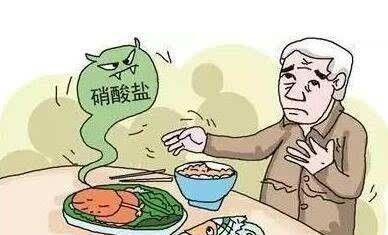Sodium nitrite is an industrial salt. Although it is similar to sodium chloride, it is toxic and inedible. Sodium nitrite is highly toxic, and people may experience symptoms of poisoning if they consume 0.2 g to 0.5 g. If they consume 3 g at a time, it may cause death. The characteristic of sodium nitrite poisoning is cyanosis, and the symptoms and signs are headache, dizziness, fatigue, chest tightness, shortness of breath, palpitations, nausea, vomiting, abdominal pain, diarrhea, lips, nails and all-body skin, mucous membrane cyanosis, even convulsions, coma, severe Can be life-threatening.
Sodium nitrite is widely used in cured meat. If cyanosis of high hemoglobin occurs, methylene blue can be used to reduce high hemoglobin. The cause of poisoning by ingestion of sodium nitrite is that the iron contained in the hemoglobin in the human body is ferrous iron, which can combine with oxygen and transport oxygen to various parts of the body as the blood circulates. When sodium nitrite is ingested by mistake, a chemical reaction takes place in the blood, which transforms hemoglobin into ferric hemoglobin. Hemoglobin of ferric iron cannot carry oxygen, so it causes hypoxia and poisoning. Therefore, accidental consumption of sodium nitrite is very harmful to health. Produced according to GB1907 national standard as a food additive, added according to GB2760 regulations, the maximum amount used in meat is 0.15g / kg, the residual amount of sodium nitrite in meat can not exceed 0.05g / kg; meat products should not exceed 0.03g / kg .
The standard for safe intake of sodium nitrite released by the World Food Hygiene Scientific Committee in 1992 is 0 ~ 0.1㎎ / ㎏ body weight; if converted to nitrite, the standard is 0 ~ 4.2㎎ / 60 kg body weight, which is used according to this standard And eating, will not cause harm to the human body. Sodium nitrite is toxic, and the side effects of excessive ingestion are paralysis of the vascular motor center, respiratory center and surrounding blood vessels, forming methemoglobin. Acute poisoning manifests as general weakness, headache, dizziness, nausea, vomiting, diarrhea, chest tightness, and difficulty breathing; on examination, the skin and mucous membranes are markedly cyanotic. In severe cases, blood pressure drops, coma, and death.
In addition, sodium nitrite also produces carcinogens in the human body. Freshly pickled kimchi also contains sodium nitrite (so kimchi is best eaten 15 days after inundation, the nitrite content will gradually decrease)
Emergency response
Skin contact: Remove contaminated clothing and wash skin thoroughly with soap and water.
Eye contact: Lift the eyelid and rinse with running water or saline. See a doctor.
Inhalation: Quickly leave the scene to fresh air. Keep the airway clear. If breathing is difficult, give oxygen. Seek medical attention immediately if breathing stops.
Ingestion: Drink plenty of warm water to induce vomiting. See a doctor.
Respiratory protection: When the concentration in the air is high, you should wear a self-priming filter dust mask. Wear self-contained breathing apparatus when necessary.
Eye protection: Wear chemical safety glasses.
Body protection: Wear rubber protective clothing.
Hand protection: wear rubber gloves.
Other protection: After work, shower and change clothes. Maintain good hygiene habits.
Leakage emergency treatment: Isolate the leaked contaminated area and restrict access. It is recommended that emergency personnel wear self-contained breathing apparatus and work clothes. Do not let the spilled substance come into contact with reducing agents, organic substances, flammable substances or metal powders. Do not directly touch the leakage. Small amount of leakage: collect in a dry, clean, covered container with a clean shovel. Large amount of leakage: collect and recycle or transport to waste disposal site for disposal.
Hazardous combustion products: nitrogen oxides.
Fire extinguishing method: Firefighters must wear gas masks and extinguish the fire in the upwind direction from a safe distance.
Fire extinguishing agent: mist water, sand.

